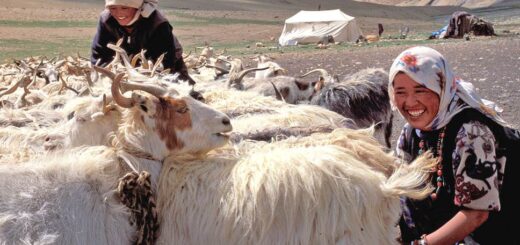National Current Affairs – UPSC/KAS Exams- 11th February 2020
Topic: Science and Technology
In News: NASA has launched Solar Orbiter to space on an Atlas 5 rocket.
More on the Topic:
- The Solar Orbiter Mission is a cooperative mission between NASA and the European Space Agency (ESA). It a seven-year mission.
- It will observe the Sun with high spatial resolution telescopes and capture observations in the environment directly surrounding the spacecraft to know how the Sun can affect the space environment throughout the solar system.
- It also intends to give a better understanding of how stars can affect the space environment throughout the solar system.
- The spacecraft also will be the first to provide images of the Sun’s poles.
- The mapping of Sun’s pole could allow for the first time to observe the concentrated source of solar wind that permeates our solar system.
- The solar wind is the mixture of charged particles that are highly concentrated at the poles and beam through our solar system, affecting satellites and electronic devices on Earth.
- The mission will also study the magnetic environment around the Sun, which in turn will provide information about the Sun’s 11-year solar cycle and its periodic outpouring of solar storms.
- Solar Orbiter carries ten instruments, three of which will help to survey how Sun’s surface changes over time.
Source: Hindu
13th Conference of Parties (COP) of the CMS
Topic: Environment and Ecology
In News: Gandhinagar in Gujarat will host The 13th Conference of Parties (COP) of the Convention on the Conservation of Migratory Species of Wild Animals (CMS).
More on the Topic:
- The theme of CMS COP13: “Migratory species connect the planet and we welcome them home.
- Logo is inspired by ‘Kolam’, a traditional artform from southern India. Kolam art form will depict key migratory species in India like Amur falcon, humpback whale and marine turtles.
- The mascot for CMS COP13: “Gibi – The Great Indian Bustard” is a critically endangered species which has been accorded the highest protection status under the Wildlife Protection Act, 1972.
About CMS:
- The Convention on the Conservation of Migratory Species of Wild Animals or the Bonn Convention is an international agreement that aims to conserve migratory species within their migratory ranges.
- The Agreement was signed under the auspices of the United Nations Environment Programme and is concerned with conservation of wildlife and habitats on a global scale.
- Its headquarters are in Bonn, Germany.
- CMS is only global and UN-based intergovernmental organization established exclusively for conservation and management of terrestrial, aquatic and avian migratory species throughout their range.
Prospects for India:
- As the host, India shall be designated the President for the next three years.
- India is Signatory to the CMS since 1983.
- India has been taking necessary actions to protect and conserve migratory marine species.
- Seven species that include Dugong, Whale Shark, Marine Turtle (two species), have been identified for preparation of Conservation and Recovery Action Plan.
- The Indian sub-continent is also part of the major bird flyway network, i.e, the Central Asian Flyway (CAF) that covers areas between the Arctic and Indian Oceans, and covers at least 279 populations of 182 migratory water bird species, including 29 globally threatened species.
- India is home to several migratory species of wildlife including snow leopard, Amur falcons, bar headed Geese, black necked cranes, marine turtles, dugongs, humpbacked whales, etc.
- It has signed non legally binding MOU with CMS on the conservation and management of Siberian Cranes (1998), Marine Turtles (2007), Dugongs (2008) and Raptors (2016).
Source: Hindu
Godavari-Cauvery River Linking Project
Topic: Economy
In News: Government has made the draft Detailed Project Report (DPR) for linking the three rivers – Godavari, Krishna and Kaveri.
More on the topic:
- According to the draft DPR, around 247 TMC of water can be diverted from Godavari river to Nagarjunsagar dam through lifting and further south for meeting the demands of Krishna, Pennar and Cauvery basins.
- This proposal to link Godavari, which is prone to flooding, and Krishna, which doesn’t have enough water, has been around for several decades.
- While river-interlinking for the purposes of navigation as an idea was mooted by the British in India, in 1972, engineer and Union Minister KL Rao proposed the linking of Godavari and Krishna for irrigation.
- The decades-old proposal finally took shape in the 2000s, and in 2016, the Andhra government linked the two rivers with the Pattiseema-Polavaram Lift Irrigation project, in Andhra’s West Godavari district.
Source: India Today
Military Exercise AJEYA WARRIOR-2020
Topic: Defence Cooperation
In News: Fifth edition of Joint Military Exercise AJEYA WARRIOR-2020 between India and United Kingdom will be conducted at Salisbury Plains, United Kingdom.
More on the Topic:
- The exercise will comprise of 120 soldiers each from Indian and United Kingdom Army who would be sharing their experiences gained during conduct of various counter insurgency and counter terrorist operations in the past.
- The aim of this exercise is to conduct company level joint training with emphasis on counter terrorists operation in Urban and Semi Urban areas.
Source: PIB
Topic: Governance
In News: Recently Supreme Court stated that there is no fundamental right to claim reservation in promotions.
More on the Topic:
- The latest judgment is a reminder that affirmative action programmes allowed in the Constitution flow from “enabling provisions” and are not rights as such.
- Major judgments note that Article 16(4), on reservation in posts, is enabling in nature. The state is not bound to provide reservations.
- But if it does so, it must be in favour of sections that are backward and inadequately represented in the services based on quantifiable data.
Background:
- The root of the current issue lies in the then Uttarakhand government’s decision to give up SC/ST quotas in promotions in Uttarakhand.
- The present political regime also shares responsibility as it argued in the Court that there is neither a basic right to reservations nor a duty by the State government to provide it.
- The Supreme Court set aside an Uttarakhand HC order directing data collection on the adequacy of representation of SC/ST candidates in the State’s services.
- SC reasoning is that once there is a decision not to extend reservation to the section, the question whether its representation in the services is inadequate is irrelevant.
Significance of Reservation:
- The idea that reservation is not a right may be in consonance with the Constitution allowing it as an option.
- But a question that looms is whether there is no government obligation to continue with affirmative action if the social situation that keeps some sections backward and at the receiving end of discrimination persists.
- Reservation is no more seen by the Supreme Court as an exception to the equality rule; rather, it is a facet of equality.
- The terms “proportionate equality” and “substantive equality” have been used to show that the equality norm acquires completion only when the marginalised are given a legal leg-up.
- Absence of reservation may render the entire system unequal.
- If no quotas are implemented and no study on backwardness and extent of representation is done, it may result in a perceptible imbalance in social representation in public services.
- In this case, whether the courts will still say a direction can’t be given to gather data and provide quotas to those with inadequate representation.
Source: Hindu
Topic: Science and Technology
In News: NASA will send a new laser-toting robot as one of seven instruments aboard the Mars 2020 rover.
More on the Topic:
- SuperCam, the robot is used for studying mineralogy and chemistry from up to about 7 meters away.
- It might help scientists find signs of fossilized microbial life on Mars.
- It fires a pulsed laser beam out of the rover’s mast to vaporize small portions of rock from a distance, providing information that will be essential to the mission’s success.
- From more than 7 m away, SuperCam can fire a laser to study rock targets smaller than a pencil point, that lets the rover study spots it can’t reach with its arm.
- SuperCam looks at rock textures and chemicals to find those that formed or changed in water on Mars long ago.
- Scientists can learn about how atmospheric molecules, water ice, and dust absorb or reflect solar radiation, this helps predict Martian weather better.
Source: Hindu

















